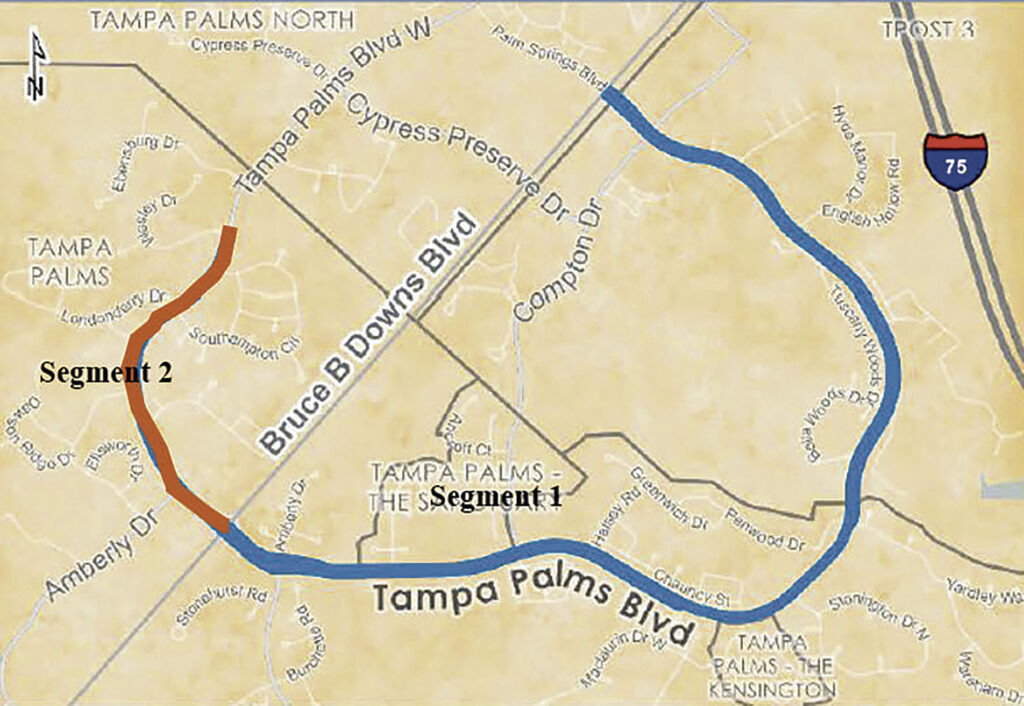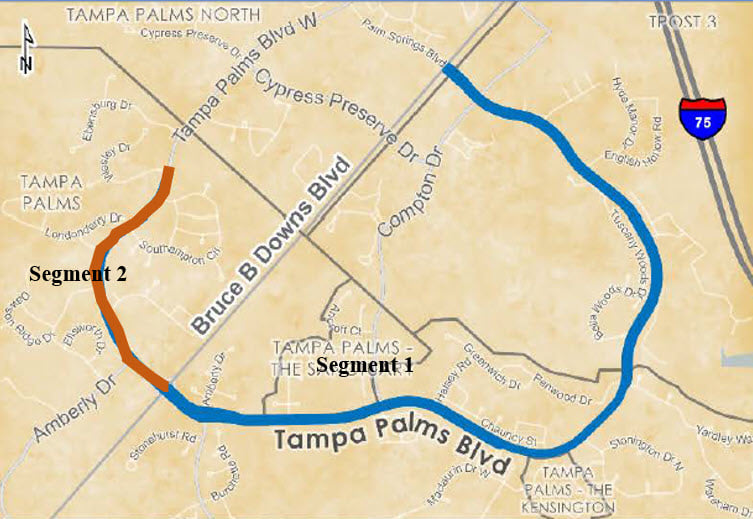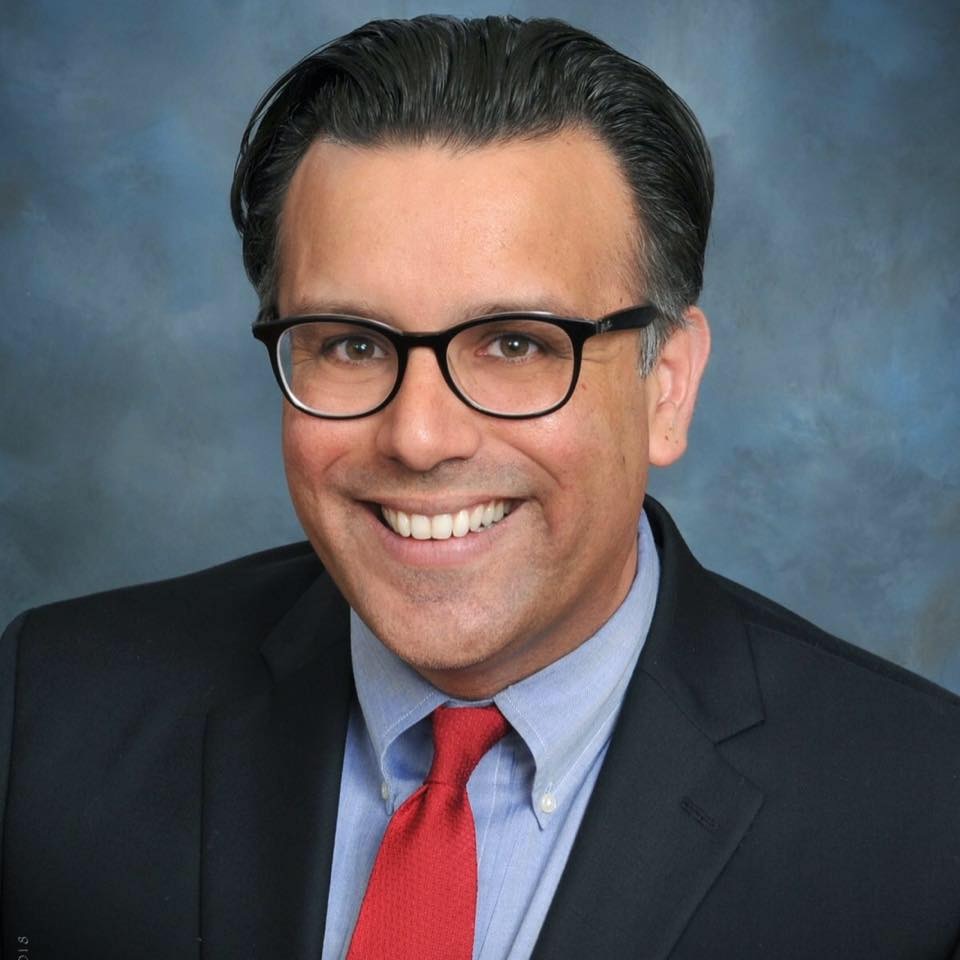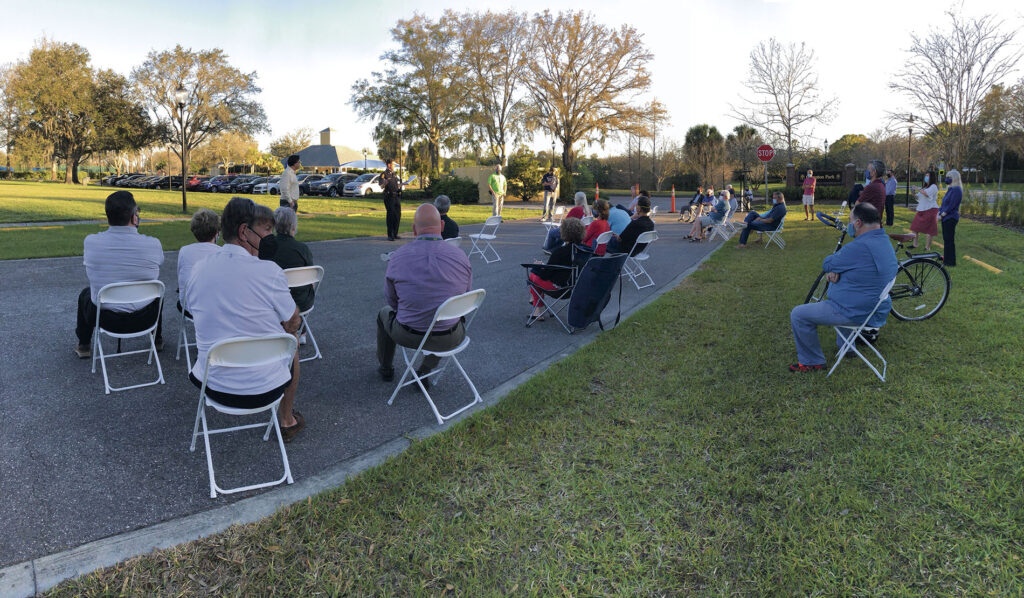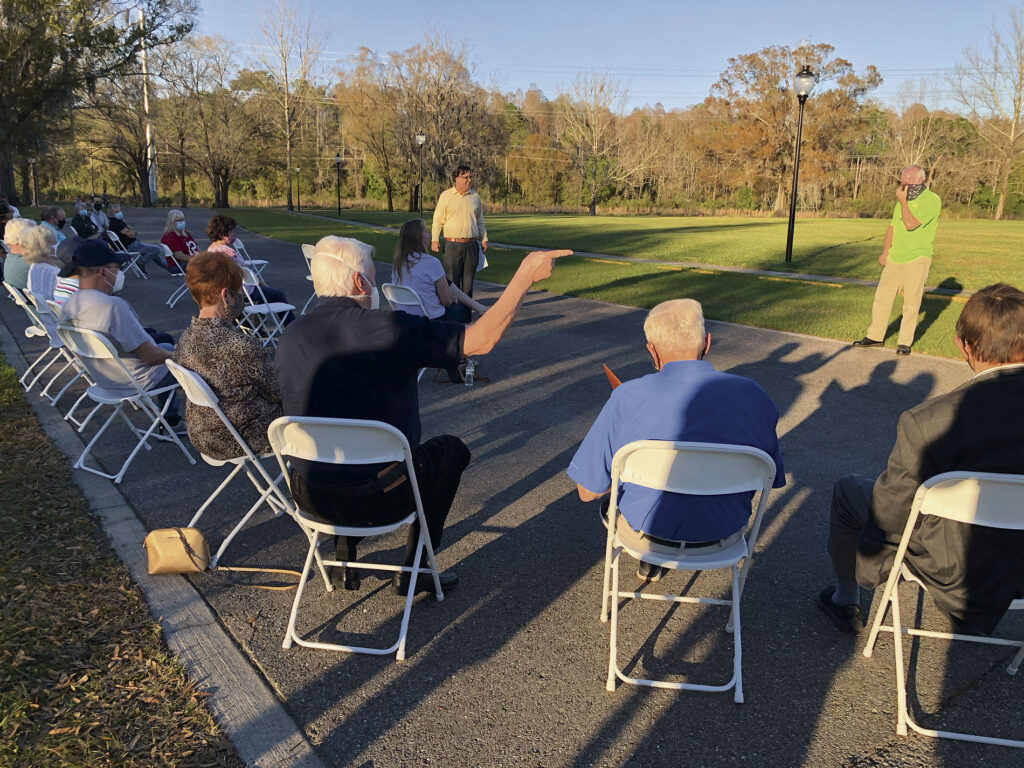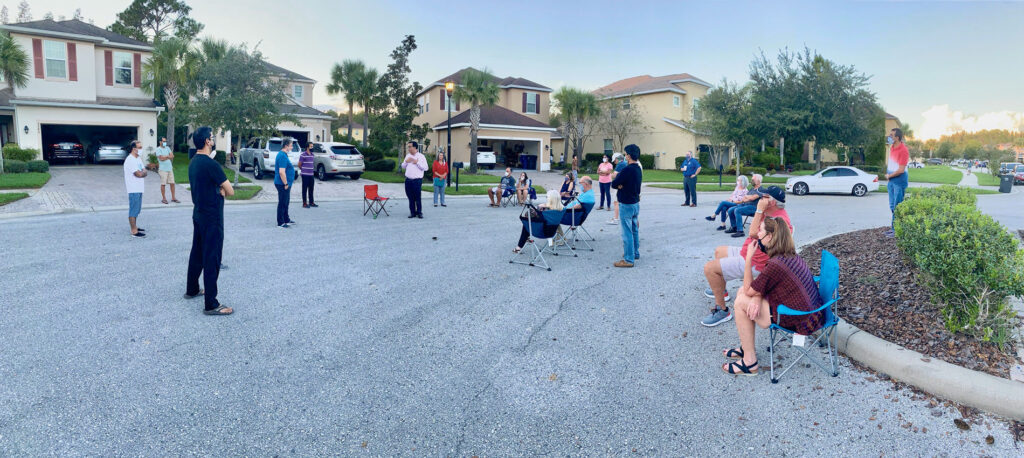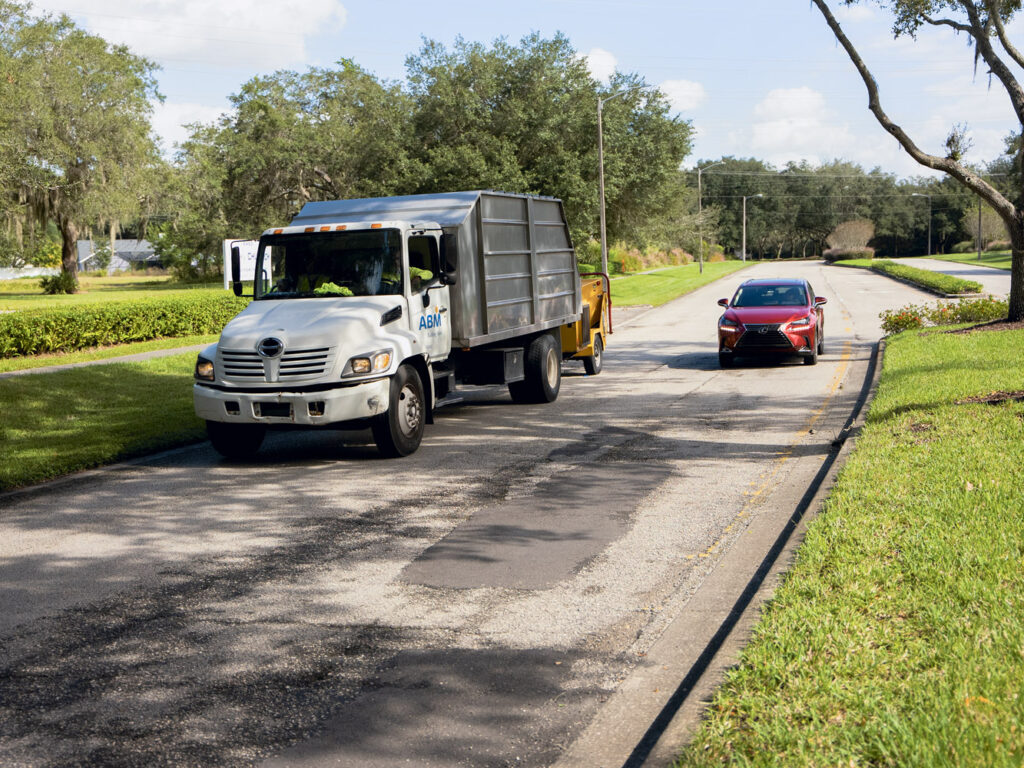
ampa Palms Blvd. has been labeled a failing road, and is getting repaved starting sometime next year, but bigger plans to reduce it to two lanes and add roundabouts have been shot down.
(Photo Charmaine George)
Plans to convert four-lane Tampa Palms Blvd. — which circles through the Tampa Palms community — into two lanes have been soundly rejected.
After revealing its preliminary Complete Street Project plan at a Sept. 28 virtual presentation and Q-&-A session, the city received near-unanimous opposition from residents. They filled out hundreds of questionnaires for the city demanding that Tampa Palms Blvd. not be downsized to accommodate things like bike lanes, additional school pickup lanes for Tampa Palms and Chiles elementary schools, roundabouts and other safety features, some of which they felt could be accomplished with four lanes.
“I read in total disbelief what the City of Tampa has proposed for Tampa Palms Blvd,” said one questionnaire. “To quote former tennis icon John McEnroe: ‘YOU CANNOT BE SERIOUS!’”
Tampa planners heard the complaints and have decided to change course.
“We are preserving the four lanes,“ says City of Tampa chief traffic management engineer Vik Bhide, “and we will make (smaller) modifications.”
The $3-million repaving of Tampa Palms Blvd., currently funded in next year’s city budget, will go forward in two segments — the south loop (or Segment 1), which runs from the north intersection of Bruce B. Downs (BBD) Blvd. to the south intersection through Tampa Palms Areas 3 and 1), and the north loop, or Segment 2, which runs from the south intersection of BBD to Ebensburg Dr. in Tampa Palms Area 2.
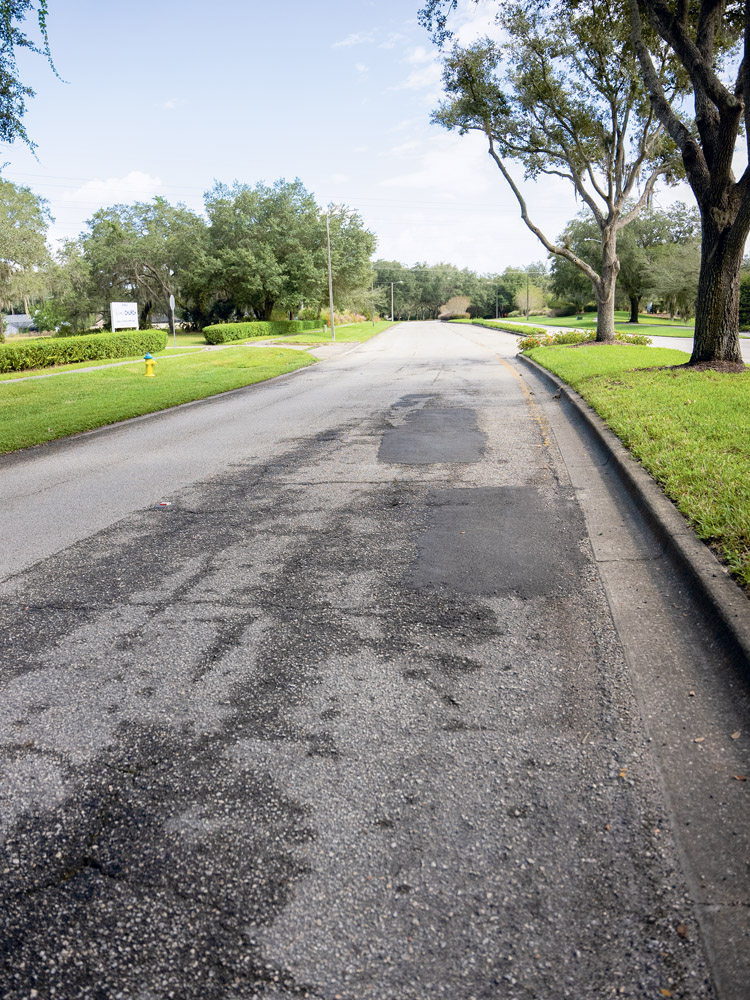
Some of the modifications mentioned by Bhide include narrowing the lanes in an effort to lower driving speeds, and making improvements at some of the intersections by installing Rectangular Rapid Flashing Beacons (RRFBs), also known as pedestrian-activated warning devices.
Bhide also says that more pedestrian crossings will be introduced, and there will be an effort to address the traffic challenges around the schools during the busy morning drop-off and afternoon pick-up.
Roundabouts, which cost about $800,000 and aren’t funded at the moment, “are off the table,” as residents seemed extremely opposed to them.
Asked if he was surprised at the quick repudiation of the initial plans, Bhide said it was all part of the process.
“We tried to work with the community and what the community provides with their feedback,” Bhide says. “And we also rely on hard facts and data.”
That data, according to Cal Hardie, P.E., the City of Tampa’s capital projects manager, indicated that both segments of Tampa Palms Blvd. being repaved are great candidates for a “road diet,” due to the number of daily trips on the road.
Hardie said anything under 10,000 is considered a great candidate for reduction, and 10,000-15,000 is considered a good candidate, and Tampa Palms Blvd. currently falls in that range.
But, the residents were clear — “Do not take away any of our lanes!”




